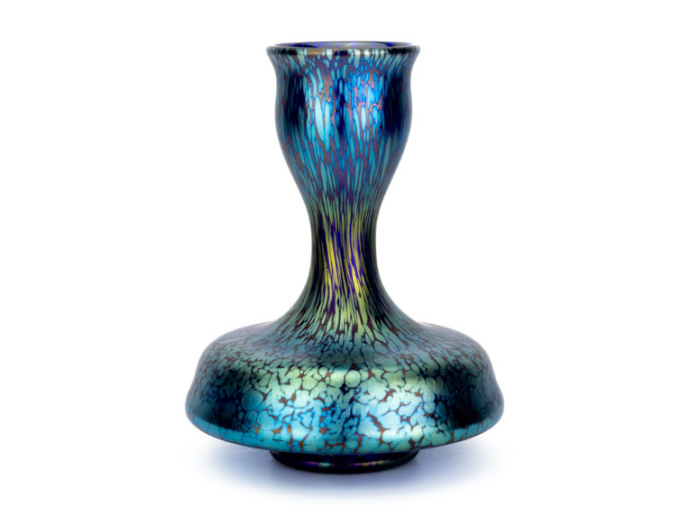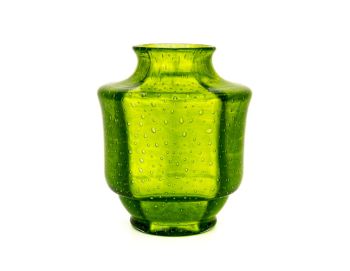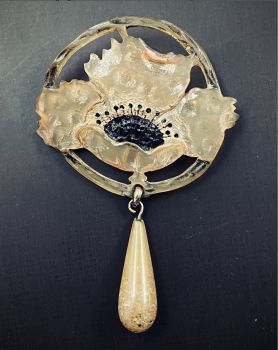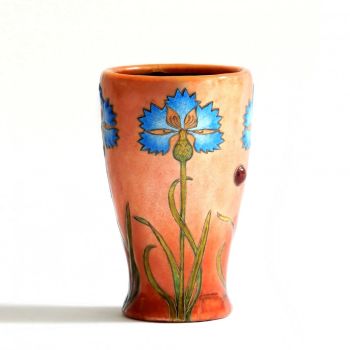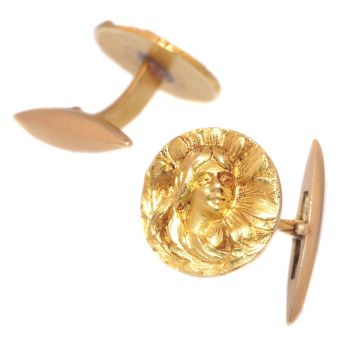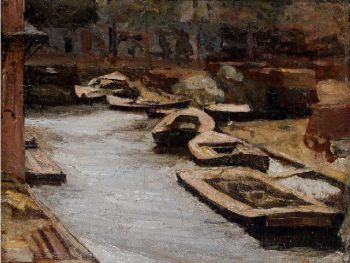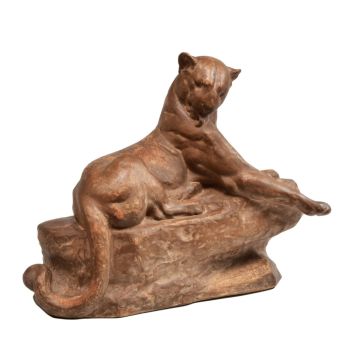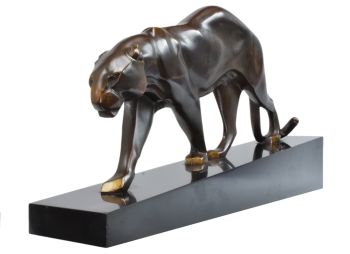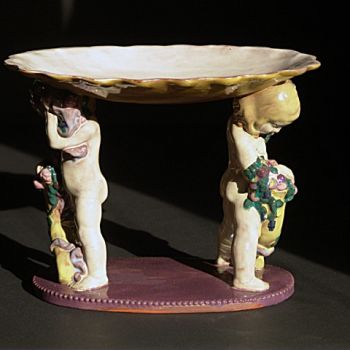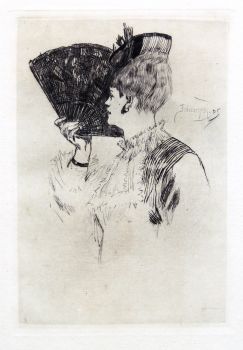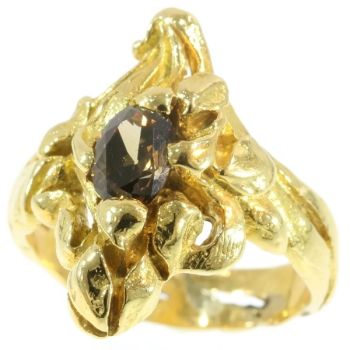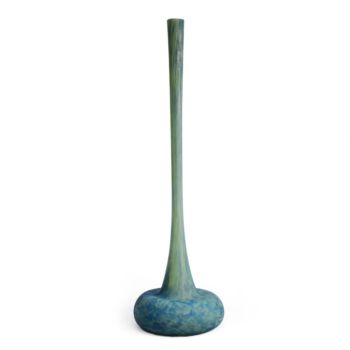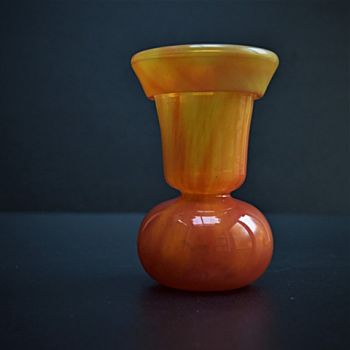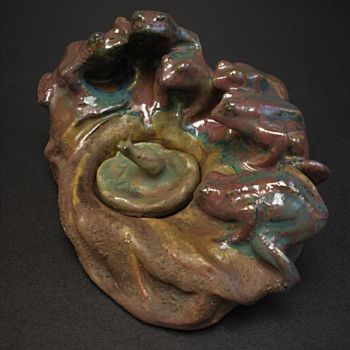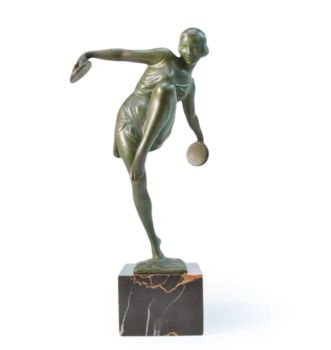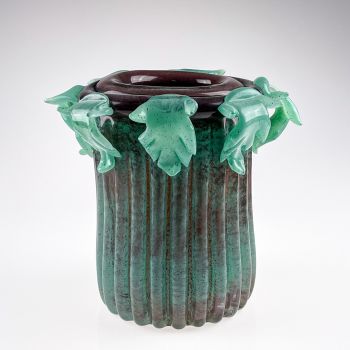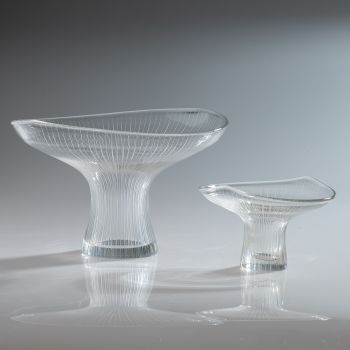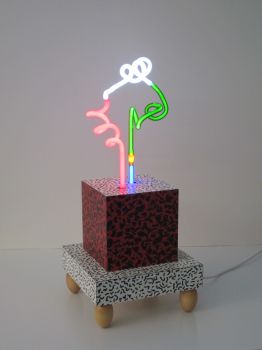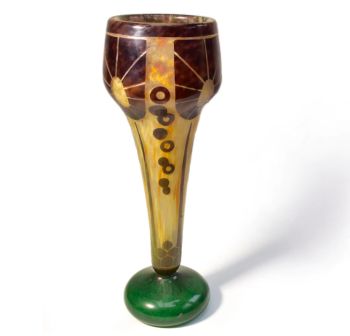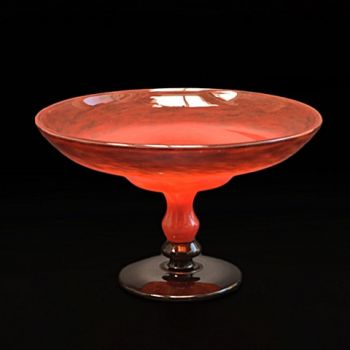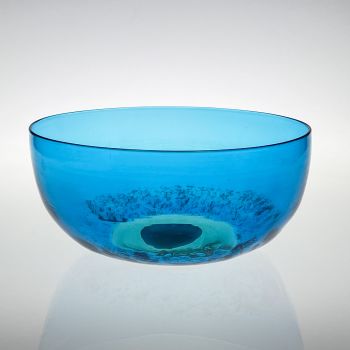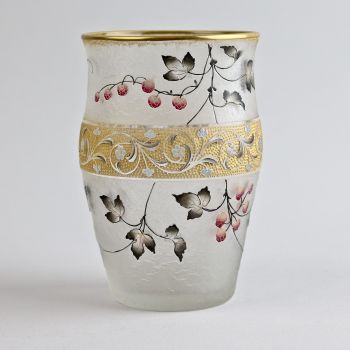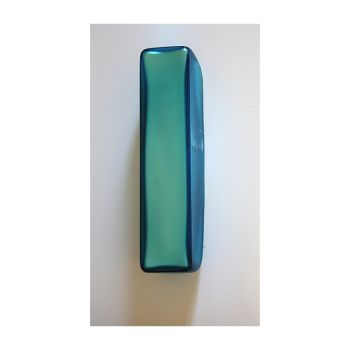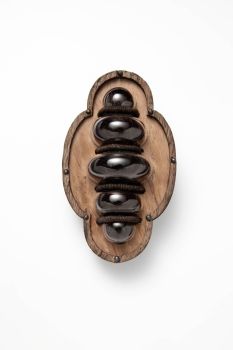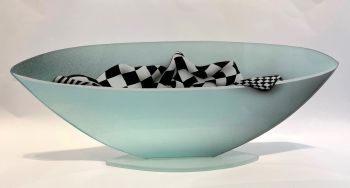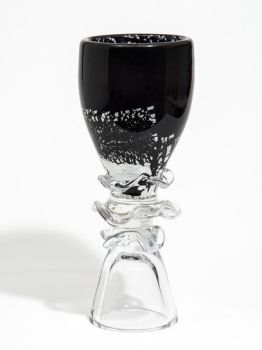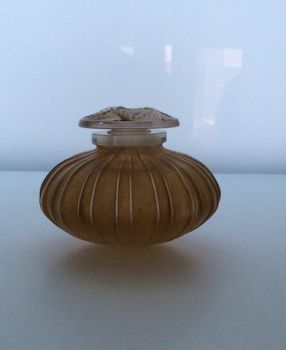World Exhibition Paris 1900 vase by Franz Hofstoetter – Cobalt Papillon 1899 - 1900
Johann Loetz (Lötz) Witwe Klostermühle
Glass
ConditionMint
Currently unavailable via Gallerease
- About the artworkThe worldwide breakthrough and recognition of Johann Loetz Witwe arose from the great success and achievement of a Grand Prix medal during the World Exhibition in Paris in the year 1900 (Paris Universelle 1900). In preparation for the World Exhibition, Max Ritter von Spaun hired the painter Franz Hofstoetter (1871 – 1958) in 1899. His task was to create innovative designs that were exclusively exhibited during the world exhibition in Paris. Franz Hofstoetter designed a series of designs and decors that were so innovative that they are considered modernist for this period.
The design of this vase is one of Franz Hofstoetter's most unusual designs. Seen from the top, the vase appears to float above the surface on which the vase is placed. The flat, wide belly and the narrowing in the neck ensure that the incidence of light in each part of the vase is different, resulting that color and brilliance are always different. The shape shows clear characteristic features of Hofstoetter's design principles.
Identical models are known in museum collections and some private collections. This model was produced in a small amount in the decor Cobalt Papillon, Orchis and Phänomen Genre 358.
This design is production number 355 designed by Franz Hofstoetter for the World Exhibition Paris 1900. - About the artist
Lötz/Loetz was founded by Johann Lötz in 1840 and was a company based in Bohemia, in the Czech Republic, at the time Lötz belonged to the Empire of Austria-Hungary. In 1879, a grandson of Lötz, Max Ritter-Von Spaun, took over the business from his grandmother and kept the name Joh. Lötz Witwe.
From that moment on, Johann Lötz Witwe really started to make a name for itself, they developed new innovative glass techniques, but their design and bright colors were also completely innovative. They designed special shapes and vases, luxury items, which they sold in luxury shops in Vienna, Berlin, Hamburg, Paris, London, Milan, Brussels and Madrid. It soon made them very well known and famous.
It was the period that Art Nouveau or as it was called in Germany Jugendstil flourished. They used organic shapes, nature was their example, also for Lötz, they developed beautiful decors, resembling butterfly wings, such as the papillon decor of this vase, often the shapes were formed organically by using tongs to shape the hot glass unevenly , as also flowers are formed. But also an octopus or sea shells were taken as examples for their special vases and decors.
Lötz participated in all kinds of World Exhibitions, including the famous World Exhibition of 1900 in Paris where they won the Grand Prize. They were awarded numerous prizes for participation in World Exhibitions. Max Ritter von Spaun also received special awards for his contribution to the glass industry, in 1883 he was allowed to use the Imperial eagle in their shield and seal, they were also allowed to use K.K. Put Private Glass Factory in front of their name. In 1889 he also received a knighthood from Franz Josef. But other royal houses were also involved. He received the Belgian Order of Leopold and the honorable French Legion d'Honneur.
Their designs were popular, also in the United States. Tiffany worked with Lötz on the Favril set. Lötz patented some of their special techniques, such as the one they used to make the Phänomen decor. They were able to make iridescent glass. In short, Lötz had become a household name. And it still is.
Lötz also worked closely with other glass manufacturers such as J.&L. Lobmeyer and E. Bakolowits Söhne in Vienna and with Argentor. In addition, Lötz worked closely with various artists, such as Josef Hoffmann, Koloman Moser, Franz Hofstötter, Michael Powolny and other artists from the Wiener Werkstätte. Michael Powolny was responsible for the much tighter tango vases of the 1920s.
The First World War and the end of the Austrian Empire meant a difficult period for Lötz.
Lötz existed until 1940, after a bombing raid the factory was completely burnt down. After WWII, the Czech Republic belonged to the satellite states of the Soviet Union, the factory was nationalized until it was finally closed in 1947.Lötz glass is still very popular and is collected worldwide, in addition, their oeuvre can also be found in many museum collections.
Artwork details
Related artworks
Johann Loetz (Lötz) Witwe Klostermühle
Johann Loetz Witwe – Jugendstil Cobalt Papillon vaas1900 - 1910
Price on requestAntiques Emporium
Johann Loetz (Lötz) Witwe Klostermühle
Johann Loetz Witwe - Phänomen Genre 7773 – Orange1900 - 1910
Price on requestAntiques Emporium
1 - 4 / 8- 1 - 4 / 24
Gabriel Argy-Rousseau
Gabriël Argy-Rousseau – Crabes et Algues vase – 19201920 - 1929
Price on requestAntiques Emporium
Johann Loetz (Lötz) Witwe Klostermühle
Johann Loetz Witwe - Phänomen Genre 7773 – Orange1900 - 1910
Price on requestAntiques Emporium
1 - 4 / 24Frères Daum
Daum Nancy – “Paysage Soleil Couchant” vase with two applied handles1900 - 1910
Price on requestAntiques Emporium
1 - 4 / 24

